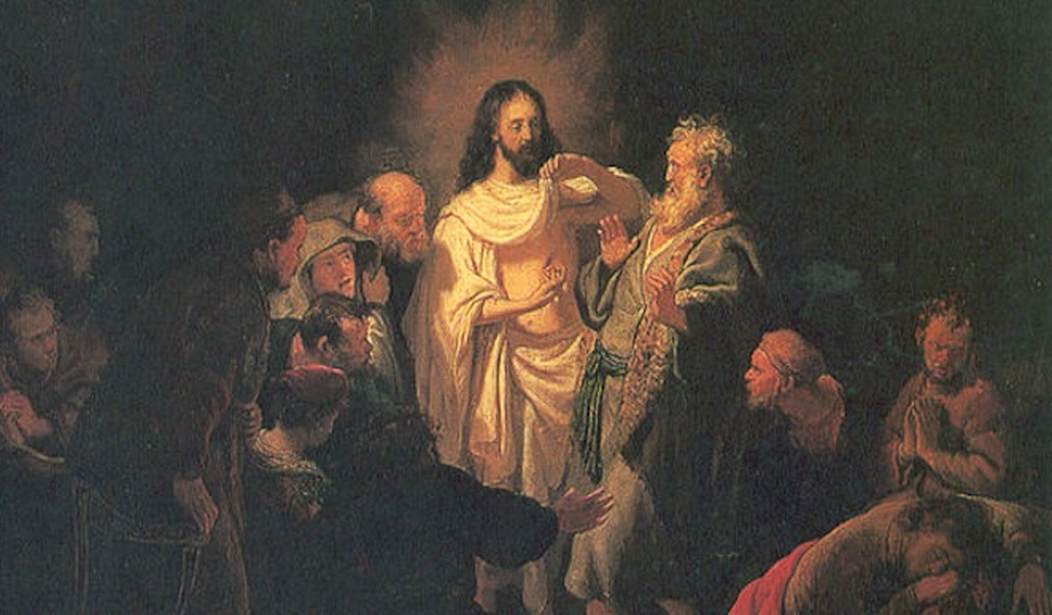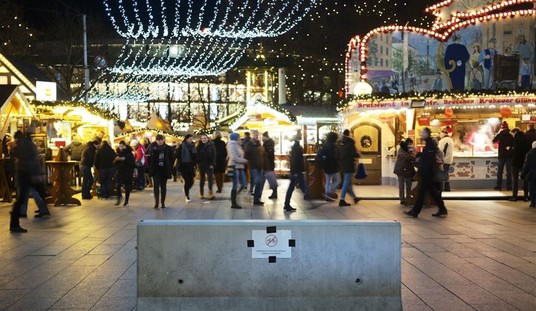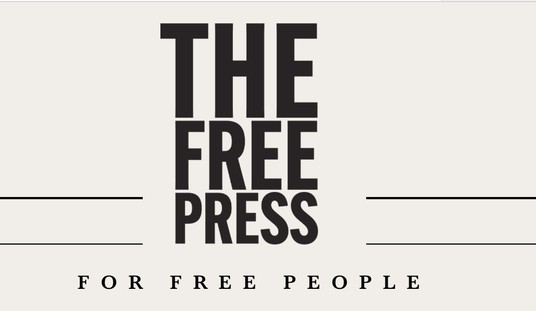This morning’s Gospel reading is John 20:19–31:
On the evening of that first day of the week, when the doors were locked, where the disciples were, for fear of the Jews, Jesus came and stood in their midst and said to them, “Peace be with you.” When he had said this, he showed them his hands and his side. The disciples rejoiced when they saw the Lord. Jesus said to them again, “Peace be with you. As the Father has sent me, so I send you.” And when he had said this, he breathed on them and said to them, “Receive the Holy Spirit. Whose sins you forgive are forgiven them, and whose sins you retain are retained.”
Thomas, called Didymus, one of the Twelve, was not with them when Jesus came. So the other disciples said to him, “We have seen the Lord.” But he said to them, “Unless I see the mark of the nails in his hands and put my finger into the nailmarks and put my hand into his side, I will not believe.”
Now a week later his disciples were again inside and Thomas was with them. Jesus came, although the doors were locked, and stood in their midst and said, “Peace be with you.” Then he said to Thomas, “Put your finger here and see my hands, and bring your hand and put it into my side, and do not be unbelieving, but believe.” Thomas answered and said to him, “My Lord and my God!” Jesus said to him, “Have you come to believe because you have seen me? Blessed are those who have not seen and have believed.”
Now, Jesus did many other signs in the presence of his disciples that are not written in this book. But these are written that you may come to believe that Jesus is the Christ, the Son of God, and that through this belief you may have life in his name.
Our world is made for doubt, disbelief, and cynicism. Or perhaps better put, the way we have shaped the world makes doubt and skepticism at least one rational response, if not the rational response, to events, claims, and movements. Heck, one of the shows I do here for our VIP members is called The Amiable Skeptics. We may not start our lives with that level of resistance to belief and faith, but it doesn’t take too many disappointments and disillusions with this fallen world to beat it into us.
This comes to mind when reading about poor Thomas the Disciple, whose very human and rational response to the non-rational has enshrined him as Doubting Thomas. It doesn’t take much for us to put ourselves in Thomas’ place, however, and to have complete sympathy for his skepticism even in the face of his friends’ unanimous testimony. This story tells us less about ourselves and our own levels of skepticism than it does about Jesus and His determination to save us from it, even to this day.
Let us consider both appearances of Jesus in this Gospel passage with that in mind. The first time Jesus appears, the disciples have locked themselves away in fear of being next on a crucifix, a completely understandable reaction considering the events of that past week. The Messiah to whom they had just dedicated three years of their lives had been annihilated in front of them. Nothing had changed, at least to their perception. They had every reason to despair, even after hearing of the empty tomb and Mary Magdalene’s testimony (in the Gospel passage immediately preceding today’s reading).
It is in this moment of doubt and despair that Jesus returns the first time. Why does Jesus return then, or even at all, rather than just send the Holy Spirit either immediately or seven weeks later at Pentecost? For one, He needs to demonstrate the victory over death and the salvation of eternal life. That, after all, is the Gospel, the Good News of Jesus Christ, which the disciples will be commissioned to spread around the world and make disciples of all nations. But also, Jesus knows the hearts of His flock and knew that they needed Him in that moment of doubt and disillusionment.
Then consider why Jesus returns the second time. The disciples — other than Thomas — had already seen Jesus. They had already begun to testify to His victory, albeit only among Jesus’ followers at this point. Thomas still refused to believe it, however, leaving him still vulnerable to the same doubt and despair. Jesus then returns to save Thomas from his skepticism and bitterness, in part because Thomas will have his own mission for Christ, but also because Jesus loves him and wants him to embrace salvation.
When Thomas does embrace Christ, he exclaims, “My Lord and my God!” And traditionally, this response or something similar to it is quietly or silently prayed by the laity at the Mass at the point where the forms of the Eucharist are elevated. (I will usually do it in English the first time and Irish the second time: Mo Thiarna ‘is mo Dé. This reminds us of our connection to Thomas, of course, but it also recognizes the purpose of the Eucharist in the Mass.
When I covered the conclave in 2013, I became friends with another reporter from Germany, and we had a number of conversations about Catholicism, our respective countries, and so on. When the subject of the Eucharist came up, she was surprised to find that I believe it to be the actual body and blood of Christ. This turned into an interesting and challenging conversation — respectful in every way — over the difficulty of that belief, for both Catholics and non-Catholics.
This is the same crisis that faced Thomas in that first week. He had no context at all for belief in physical life after death, especially the kind of death Jesus suffered. Similarly, in our fallen world, we have no context at all for the miraculous, especially for the transubstantiation of the Eucharist. Because our fallen world rewards skepticism and doubt and forces us to seek ‘proofs’ of everything, we discard the non-rational entirely — even as people of faith.
We should see it exactly the same way that Thomas and the other disciples experienced Christ, however. Christ came back after defeating death to feed and strengthen the disciples’ belief in Him. Christ came back a second time to Thomas when the disciples’ testimony didn’t overcome Thomas’ despair. In both cases, Jesus comes back to offer His body as a testament to His victory and our salvation, in order to firm up their faith and purpose for the long and hard road ahead. The Eucharist is Christ coming back for each and every one of us for the same purpose — to strengthen us, to lift us, to show us His love and presence in eternity.
The Eucharist is our embrace of Christ, our rescue from despair and doubt. The great lesson today is not that we should share in a sense of shame for our frailty, but in wonder that our Lord stands ready to rescue us from it — in the Mass, in our hearts, and in our work for Him. As a well-known musical version of today’s Psalm puts it:
Give thanks to the Lord, for God is good,
His mercy endures forever,
Let the house of Israel say
God’s mercy endures forever!
The front page image is a detail from “The Incredulity of Thomas” by Rembrandt van Rijn, 1634. On display at the Pushkin Museum in Moscow, Russia. Via Wikimedia Commons.
“Sunday Reflection” is a regular feature, looking at the specific readings used in today’s Mass in Catholic parishes around the world. The reflection represents only my own point of view, intended to help prepare myself for the Lord’s day and perhaps spark a meaningful discussion. Previous Sunday Reflections from the main page can be found here.







Join the conversation as a VIP Member